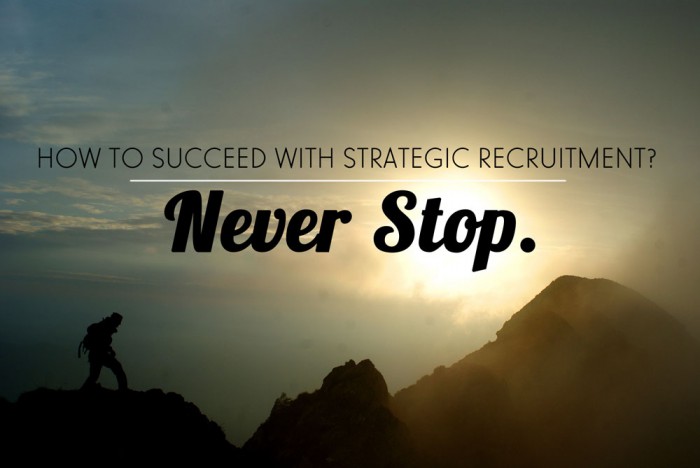Whether it’s getting beyond the silos or just thinking outside the box, we all benefit from stretching our boundaries—both figuratively and sometimes literally speaking.
Case in point, I just came back from the Yukon. As an HR consultant and immigration specialist, I travel fairly frequently to present on various business-related topics and, in turn, to learn about the challenges and solutions of others. Most recently, that led me to facilitate a workshop on strategic recruitment in Canada’s true North.
What we touched upon on were the similarities and differences for employers in more rural parts of the country compared to their urban counterparts. Where we focused though was on strategy. While every geography and industry comes with its own challenges and opportunities, the strategic approach to recruitment remains a common success driver.
Authenticity Defines the Right “Fit”
Higher volumes of applicants willing to relocate from afar are not the ultimate benchmark of a recruiting strategy’s success; more key is the ability to identify those who want to be there and are motivated to perform.
Employers and candidates alike are always looking for the right “fit”. The key for employers is to be authentic, informed and involved. Creating a great recruitment strategy starts with understanding the organization and its business goals.
The employer needs to be clear about its company culture in order to know how to present itself to the right individuals; your culture is a living brand and plays an important part of this equation. It, therefore, also pays dividends to listen to the front lines and managers within your organization to gain even greater clarity—and better, lasting results.
Systematic Thinking vs. Systemic Failure
Hiring and retention requires a systematic way of thinking. Employers should always be in hiring mode; interestingly, successful recruitment correlates to effective retention and provides a strategic pool for succession potential.
Similarly, a failure to hire or retain might also be viewed in a systemic light. Business leaders need to participate and remain invested in evolving and fine-tuning their internal processes. After all, beyond the initial hiring and honeymoon period, there is the full career cycle to be considered.
Retention Built By Leadership (Some Assembly Required)
Those who think their job is finished when the applicant becomes an employee are missing the due diligence and opportunity. This is when everything is just getting started. Bringing the best and brightest into the organization is not enough if there is not a structure to support the rest of the employment experience.
In addition to bringing in the right people, maintaining the conditions in which they will thrive is essential. Employees need accurate job descriptions, onboarding, and ongoing feedback. These HR tools do not have to be complicated or time-consuming, but they need to exist in some form to maintain ongoing employment engagement—the key to productivity and profitability.
Otherwise, the cost of bad hires or constant turnover is the price to be paid, along with further searching for the right fit.
Ongoing Recruitment Anchored in Relationships
Ownership in any business requires a connection and partnership with your employees beyond paystubs and approvals. Creating ongoing touch points for dialogue and feedback ensures engagement and retention remain high.
While this strategic approach brings with it changes to both the hiring and management systems currently in place, it also brings different results.
When specifically applied to hiring, it means that “recruiting” never stops, but is far more likely to be addressing growth than attrition issues. This is how to strategically recruit and grow your business from within.
Read more about Amelia’s fascinating experience travelling to the Yukon to speak about recruitment strategies for HRMA.
Tags: hiring, hr, recruiting



